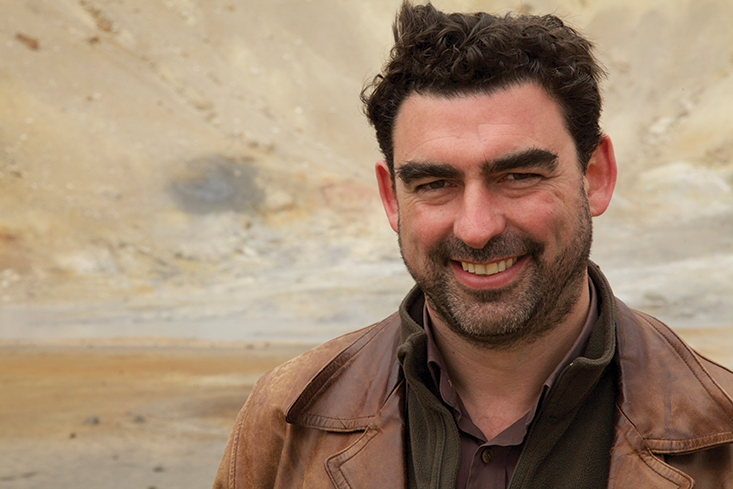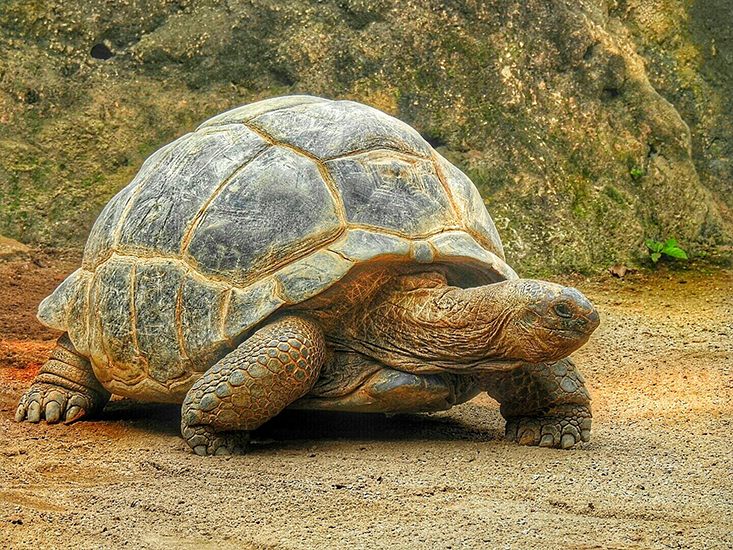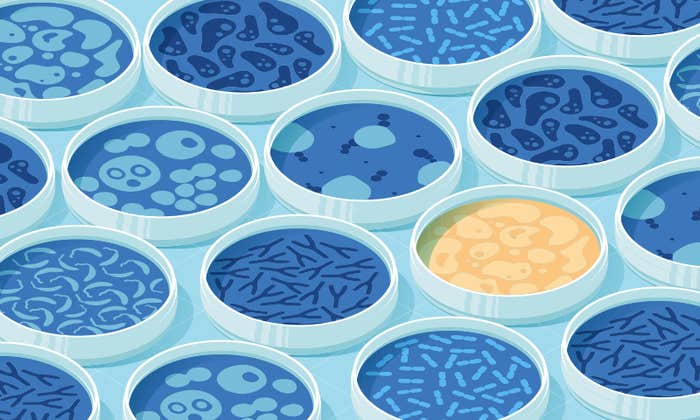Nick Lane is an evolutionary biochemist at University College London who thinks about the big questions of life: how it began, how it is maintained, why we age and die, and why we have sex. Shunning the habit of our times to regard these as questions for evolutionary genetics, Lane insists that our fundamental biochemical mechanisms—particularly those through which living cells generate energy—may determine or limit these facts of life.
Lane has been steadily constructing an alternative, complementary view of evolution to the one in which genes compete for reproductive success and survival. He has argued that some of the big shifts during evolutionary history, such as the appearance of complex cells called eukaryotes (like our own) and the emergence of multicellular life forms, are best understood by considering the energetic constraints.

Lane’s book Life Ascending: The Ten Great Inventions of Evolution was awarded the 2010 Royal Society Science Books Prize, the top prize in the United Kingdom for books on science. His 2015 book The Vital Question: Why Is Life the Way It Is? has been described as “game-changing” and “brimming with bold and important ideas.” It offers a new, detailed model for how life might have begun by harnessing the incipient chemical energy at deep-sea vents. Bill Gates called The Vital Question “an amazing inquiry into the origins of life.”
Nautilus caught up with Lane in his laboratory in London and asked him about his ideas on aging, sex, and death.
In your book Power, Sex, Suicide you ask, “When did the drive for sex become punishable by death, and why?” What do you mean?
Sex evolved with complex cells. If we go back to bacteria, they don’t do sex as we know it. They do something similar—they swap genes, which is essentially what sex is doing: It’s moving genes around. But we’re combining them in different ways. The complex, eukaryotic cells, which include us, plants, fungi, and so on—all have sex. And that in itself is quite remarkable. But we don’t really know what the advantage of sex is. This is something that arose in evolution in this large group of complex cells. It seems to be necessary, and it’s linked tightly to death. The more we focus our resources on producing offspring, the better we will do in evolutionary terms. So if I focus all my resources on having sex, then effectively I take resources away from longevity. I take them away from surviving for longer, and so I shorten my lifespan almost deliberately in evolutionary terms.
There’s a cost to living; there’s a cost to doing everything.
What do you mean that sex is linked tightly to death?
Death in that sense is a specific process called programmed cell death. It’s controlled by the genes, it costs energy, and it’s very deliberate. Cells that have become damaged kill themselves and remove themselves and are often replaced with pristine new cells from the stem-cell population. Sex is doing that at the level of individuals by recombining genes. What that’s doing, in terms of natural selection, is increasing the differences between individuals. It’s increasing the variability in the population, and that aids natural selection. And what natural selection is seeing as the differences between people is back to sex again. How many offspring are you leaving? For us, that particularly means men. Selection is very biased toward a relatively small proportion of men leaving far more children.
You mean that some males do well and some do poorly?
Yes. What sex is doing at the level of selection is enabling the best genes to leave more copies of themselves. It’s increasing the variance in the population. So you have some very effective males and some fairly ineffective males, and it’s giving the opportunity to the more effective males. It’s not a very pleasant way of seeing the world from a human point of view. But that’s basically what evolution is doing.
You trace energetic processes down to a part of the cell called the mitochondrion. Where did mitochondria come from?
They were bacterium that got into another cell. There’s still argument about what that other cell looked like or was, but almost certainly it was quite a simple cell. And in the end the mitochondria became the power packs of our cells. So all the energy that we need to live is coming from the mitochondria.
How does this relate to aging?
There’s a cost to living; there’s a cost to doing everything. That cost depends on the speed at which we’re living, to some degree. If we are living our lives at a very fast rate, we tend to wear out sooner. There is a strong relationship between metabolic rate—the rate at which we’re taking in oxygen and burning up food—and lifespan. Under good conditions, we focus most of our resources on sexual maturation. I’m speaking not so much about humans as animals in general. But this goes beyond the animal kingdom.
We focus resources on sexual maturation and leaving offspring. But if the conditions are unfavorable, if we’re starving, there’s a kind of switch from gearing up for sex and protein synthesis and bulking up to gearing up for survival: battening down the hatches and waiting out the bad times. This genetic switch has been the focus of most work on aging over the last decade or so. It relates not exactly to metabolic rate, but to flux, to the way in which we are focusing our resources. We’re either focusing them on sex or we’re focusing them on survival. Various genetic mutations can double or triple the lifespan of very simple organisms. It’s much harder with something as complex as us.
Birds live far longer than they ought to if you extrapolate from their metabolic rate.
All the same, we have an extraordinary desire for extending our lifespan. What are the best strategies? Some studies on calorie restriction in mammals seem to suggest this is a way to significantly increase lifespan. Is that going to work for humans?
It’s pretty equivocal. There have been quite long-term studies, decades long, on rhesus monkeys, which give contradictory results. Some suggest it works quite well, extending lifespan by 30 or 40 percent. Others have suggested that allowing the control group to eat whatever they want, as much as they want, is actually quite destructive to good health, and so they live shorter lives than perhaps they should have. So there’s a lot of uncertainties in the experimental design. Besides, most humans would not wish to restrict their diet by 40 percent or so. There are some people who do it, but it’s not clear if it actually extends their life. I heard of one case of someone who fell over and broke his bones surprisingly easily—it turned out that he’d got osteoporosis. So there are side effects.
What, then, are the real possibilities for human longevity?
There seem to be, in an evolutionary sense, almost no limits. That’s what’s really striking. Possums that live on an island without predators double their lifespan over five or six generations. And birds live far longer than they ought to if you extrapolate from their metabolic rate. A pigeon will live for about 30 years, even though, based on their high metabolic rate and body size, you would predict a lifespan of only three or four years. That’s a tenfold increase. There are good reasons to think the reason that pigeons live a lot longer is that they have been selected for really high aerobic capacity; in other words, they’re able to fly. There’s a tremendous metabolic cost just to get off the ground, and so they have to have good mitochondria to do that. And part of having those really good mitochondria is that they leak very few free radicals. That seems to be one of the reasons why pigeons live so long.

We hear a lot about free radicals, particularly in relation to diet, and how we should take things with antioxidants to supposedly mop up free radicals and live longer. What do we really know about free radicals?
The free-radical theory of aging, as it was originally stated 50 or 60 years ago, said in effect that mitochondria produce these reactive forms of oxygen called free radicals. A certain proportion of the oxygen we are breathing gets released as reactive free radicals that can damage DNA, mutate DNA, damage proteins, or damage membranes themselves. And over time that damage builds up into what’s called an error catastrophe, where the cell is no longer able to support itself. Over the last couple of decades the theory as originally stated has been comprehensively disproved; it’s not true. The idea that we can prolong our lives or protect ourselves against age-related diseases, which include cancer and dementias, by taking large antioxidant supplements, is not true either. There have been a lot of studies and large meta-analyses done. And the data show quite convincingly that if anything you’re more likely to die sooner if you take large antioxidant supplements.
Why don’t antioxidants work, if oxidizing free radicals do damage our cells?
I think there’s a very good and generally accepted reason: They interfere with signaling. We now know that free radicals signal a stress state in the cell. There are all kinds of subtle distinctions, but if something is going wrong, they are behaving like a smoke detector, or at least they are the smoke, and the cell is set up to detect the smoke and react accordingly. The trouble with antioxidants is they’re in effect disabling the smoke detector, and that’s not a good thing to do. The smoke detector sets off a stress response and that stress response changes the expression of all kinds of genes, which are protective for the cell. So very often more free radicals produces a stress response which is protective, which battens down those hatches and allows a cell to go on living for longer. Messing around with that signal by throwing antioxidants at it really doesn’t help.
If pigeons can live 10 times longer than their metabolic rate predicts, does that mean we could also do so?
In our case, we are limited by our brains. If we can replace everything—cells, tissues—as we live, then there would be presumably no limits to how long we could live. But if we replace our neurons, we’re also rewriting our own experience in the process, and cease to be ourselves. I think that’s the real penalty for extending life beyond the natural maximal lifespan of a neuron, which is 120 years or thereabouts. That’s where I see the real limit. How do we prevent our brains from effectively losing mass over time, losing neuronal connections, losing synapses, which is where we’re storing memories and experiences?
Mitochondria, which are often dismissed essentially as a power pack, have been responsible for the evolution of all of this complexity.
If we could regenerate neurons to replace damaged ones, do they come in a pristine state, ready to be imprinted with experience? Or are they conditioned by the neural pathways already present? And which parts of the brain are we talking about regenerating? Those associated with memory? Cognitive processing?
Neurons don’t become imprinted with experience. But a single neuron may have 10,000 synaptic connections as part of a neural network, and we don’t yet understand their contribution to the network as a whole. Cognitive processing seems inherently simpler to replace than memory; if synaptic connections store memory, how could a newly grown neuron reconstruct all those connections?
There are other interesting problems with replacing neurons. You can take a skin cell, for example, and reprogram it to become a stem cell. Amazingly, that works quite well. You can then induce this stem cell to become a neuron, and maybe use it to replace neurons dying off in the brain. If this new neuron can successfully establish the right connections, an important question is: What happens to its mitochondria? When you reprogram a skin cell, its mitochondria revert to look like those in stem cells—they become rounded and lose their electrical charge. But we don’t yet know what happens to their DNA. Does it retain the damage it incurred in its former life in skin cells, or is it somehow cleaned up? If it remains damaged, then this shiny new neuron might be a charade, which will pack up quickly like a cheap plastic replica.
In Power, Sex, Suicide you write, “to live longer and to rid ourselves of the diseases of old age, we will need more mitochondria.” Why do we need more?
If we think about lifespan and look to reptiles, to tortoises, they live an awfully long time. And the reason is they’ve got an extremely low metabolic rate; they hardly move at all, and so they live a long time just because their cells are not really under any real stress. At the other end of the spectrum, we see birds, which have a faster metabolic rate than we do. They have a higher body temperature, they consume more oxygen, and yet they live longer than mammals of equivalent size and metabolic rate. And they seem to have done that by selecting high-quality mitochondria and having lots of them, so they’ve ramped up the function of the entire system. So there’s an almost U-shaped curve of longevity versus metabolic rate that I find really intriguing.
Where do we fall on that curve?
We are somewhere in the middle. Our lifespan is relatively short compared to either birds or reptiles for our body mass, because we have a fairly high metabolic rate, but we don’t have the high-quality mitochondria that birds have. That’s partly a matter of the quality of the individual mitochondria, and partly due to the number of them. We’ve got 10 times as many mitochondria in our liver cells, for example, as a tortoise. So this seems to mean—in my mind at least, this is not proved—selecting for high aerobic capacity seems to increase lifespan. This is one of the reasons why birds and bats have very high power requirements: to fly and live a long time. Now, we live much longer than gorillas or chimpanzees. We seem to have been through a phase in early human evolution when we increased our aerobic capacity, our stamina. Whether this was related to chasing gazelles across the plains of Africa or what, I don’t know—it’s disputed. But we certainly have a high stamina and capacity to keep on being active compared to other great apes.

Do we know when that expansion of aerobic capacity happened in evolutionary terms?
I’m thinking a million years ago, rather than a couple of hundred thousand years ago. It seems to have been a relatively early increase.
Let’s go deeper into the evolution of complex cells. Can you tell us more about the early union of bacterium and a host cell?
What’s uncertain is what was the host cell that acquired this bacterium, and what was the bacterium that got acquired. We don’t really know. But I have a fairly strong view on how this might have happened, strong in the sense that I think it’s scientifically more pregnant with possibilities. A lot of evidence points to the fact that the host cell was a simple bacterium-like cell called an archaeon. It didn’t have a nucleus to store its DNA and it didn’t have sex. It didn’t go around engulfing other cells. It acquired, by some kind of fluke accident, a bacterium that got inside and became the mitochondria. So we have two very simple cells involved, and one of them gets inside the other one. All of the traits of eukaryotic cells, which is our own type of complex cell, arose in the context of this interaction. All of this complexity—sex and lifespan and aging—arose in that context. That means that mitochondria, which are often dismissed essentially as a power pack, have been responsible for the evolution of all of this complexity, and are still very much central to it all.
Mitochondria are undersold as mere energy sources, then?
Well, if we’re looking at how can we extend human lifespan, we’ve got to think about the mitochondrion not from the point of view that it’s a power pack, but that it was one of two key players that gave rise to all of that complexity and are still absolutely central to it. Whether a cell is going to make a copy of itself, divide, or die, mitochondria are essential to all of that.
How might scientists, then, harness the manifold functions of mitochondria to expand human lifespan?
This is tough. The simplest way to replace bad mitochondria with good ones is to induce selection at the level of the cell—cells with bad mitochondria die, those with good mitochondria survive. So the first thing you need is cell turnover. Exercise can do that, even a good diet: Fruit and vegetables may be good for us in part because they contain toxins that stimulate cell turnover, and have little to do with antioxidants. The age-old advice is good—eat well and exercise. But that won’t help us extend our lives much further.
When cells are not being replaced, selection doesn’t operate at the level of cells, so bad mitochondria can proliferate. That happens surprisingly easily as we age, and in all kinds of diseases—the worst mitochondria proliferate at the expense of the good ones. Heart muscle fibers (which are not easily replaced either) can become ragged, as mitochondrial mutants take over.
The brain is still the big problem, but may hold a clue to the answer—mitochondrial transplants. I wondered for a long time how neurons could survive for 120 years with a stock of mitochondria they acquired at birth. It turns out that’s not what they do; mitochondria can be transferred into them from stem cells down tiny connecting filaments. This sounds like science fiction, but if stem cells can pass on pristine mitochondria to neighboring neurons, it is almost literally an infusion of life. It won’t be easy, but regenerative medicine might be the best approach—not replacing neurons directly but reinvigorating the stem cells.
Philip Ball is the author of Invisible: The Dangerous Allure of the Unseen and many books on science and art.


























